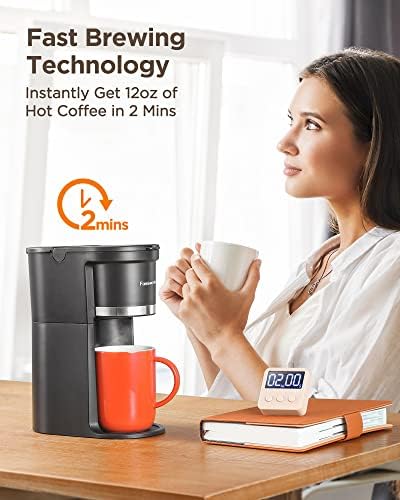Espresso Machines: A History of Innovation and Design
Espresso is a beloved and timeless coffee beverage enjoyed by people all around the world. The rich and robust flavor of espresso has been perfected over the centuries and has become a staple in coffee culture. One of the key components to the perfect espresso is the espresso machine. The history of espresso machines is a fascinating journey of innovation and design, from its humble beginnings to the highly advanced machines we see today.
Early Inventions
The first espresso machine was invented in 1884 by Angelo Moriondo, an Italian inventor. His machine used steam pressure to force water through coffee grounds, producing a concentrated and flavorful coffee beverage. This early design laid the groundwork for future innovations in espresso machine technology.
The Lever Machine
In 1947, Italian inventor Achille Gaggia revolutionized the espresso machine with the invention of the lever machine. This machine used a lever to create the pressure needed to produce espresso, resulting in a thicker and more flavorful coffee. Gaggia’s invention set the standard for espresso machines and laid the foundation for modern designs.
The Introduction of Pump Machines
In the 1960s, pump-driven espresso machines were introduced, utilizing an electric pump to create the high pressure needed to produce espresso. This innovation made it easier to consistently produce high-quality espresso and paved the way for more advanced designs in the future.
Modern Innovations
Today, espresso machines have evolved to include a wide range of features and designs, from manual lever machines to fully automated models. Advanced technology has allowed for precise temperature and pressure control, resulting in the perfect extraction of espresso every time. Designs range from sleek and modern to vintage-inspired, with options to suit any coffee lover’s taste.
FAQs
What is the difference between a steam-driven and pump-driven espresso machine?
A steam-driven espresso machine uses steam pressure to force water through the coffee grounds, resulting in a less consistent flavor and lower pressure. A pump-driven espresso machine uses an electric pump to create the high pressure needed for the perfect extraction of espresso, resulting in a more consistent and flavorful coffee.
What features should I look for in a modern espresso machine?
Modern espresso machines offer a wide range of features, including temperature control, pressure profiling, and programmable settings. Look for a machine that fits your specific needs and preferences, whether you prefer manual control or fully automated features.
What is the best grind size for espresso?
The ideal grind size for espresso is fine and consistent, allowing for optimal extraction of flavor and aroma. It’s important to invest in a high-quality burr grinder to achieve the perfect grind for your espresso machine.
What is the optimal brewing temperature for espresso?
The optimal brewing temperature for espresso is typically between 195-205°F (90-96°C). This temperature range allows for the best extraction of flavors and aromas from the coffee grounds, resulting in a rich and delicious espresso.
What are some popular espresso machine brands?
Some popular espresso machine brands include Breville, De’Longhi, Gaggia, and La Marzocco. These brands offer a wide range of models to suit different preferences and budgets, with options for both home and commercial use.
In conclusion, the history of espresso machines is a testament to human innovation and design. From the humble beginnings of steam-driven machines to the advanced technology of modern espresso machines, the quest for the perfect espresso has driven countless innovations. Whether you prefer a traditional lever machine or a fully automated model, there is a perfect espresso machine out there for every coffee lover.
“All images and products featured on this Blog.troca.cafe are the property of their respective owners. All rights to these materials are acknowledged and reserved.”
